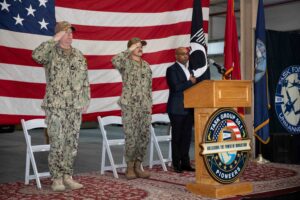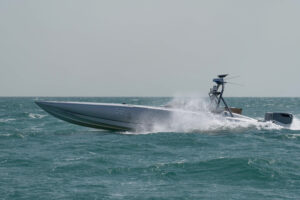U.S. Naval Forces Central Command’s unit focused on testing unmanned systems in recent weeks started a new task group focused on manned-unmanned teaming operations.
Task Force 59, which has been testing unmanned systems throughout the 5th Fleet area of operations, has now delegated a subset of work to the new Task Group 59.1. The Navy said this means it will focus on “the operational deployment of unmanned systems teamed with manned operators to bolster maritime security across the Middle East region.”

The new task group underwent a commissioning ceremony in Manama, Bahrain on Jan. 3.
Task Force 59 was established in 2021 and the Naval Forces Central Command boasted it has tested, upgraded and operated with more than 23 unmanned systems as it tests unmanned systems and artificial intelligence in maritime operations.
“Breaking the molds of the legacy acquisition model requires a level of connective tissue between industry partners and the end user operators, and 59.1 answers that bell. Our Sailors will be there to ensure seamless integration of new tech introduced to operators while in theater,” Task Force 59 Commodore Capt. Colin Corridan said in a statement during the event.
Corridan noted in recent months Task Force 59 successfully test fired Miniature Aerial Missile System weapons off an unmanned MARTAC T38 Devil Ray unmanned surface vehicle (USV), with direct hits against a training target each time (Defense Daily, Nov. 2).
Corridan said this kind of progress meant the next step requires an effective team.

“The handpicked team that is 59.1, identified to pioneer this endeavor will be leading the way for the Navy in the hybrid fleet ecosystem. I’m very excited for what lies ahead for the pioneers,” he said.
59.1, will be led by Lt. Luis Echeverria, who had over 60,000 unmanned operating hours at sea across 34 operations and exercises with Task Force 59.
The Navy said this is the first time this kind of junior officer has reached this level of command “and highlights the growing need for a cadre of experts at more junior levels to be in positions of leadership.”
“Task Group 59.1 is ready to take the capabilities of TF 59’s unmanned systems and charter new ground with manned and unmanned teaming concepts,” Echeverria said in a statement.